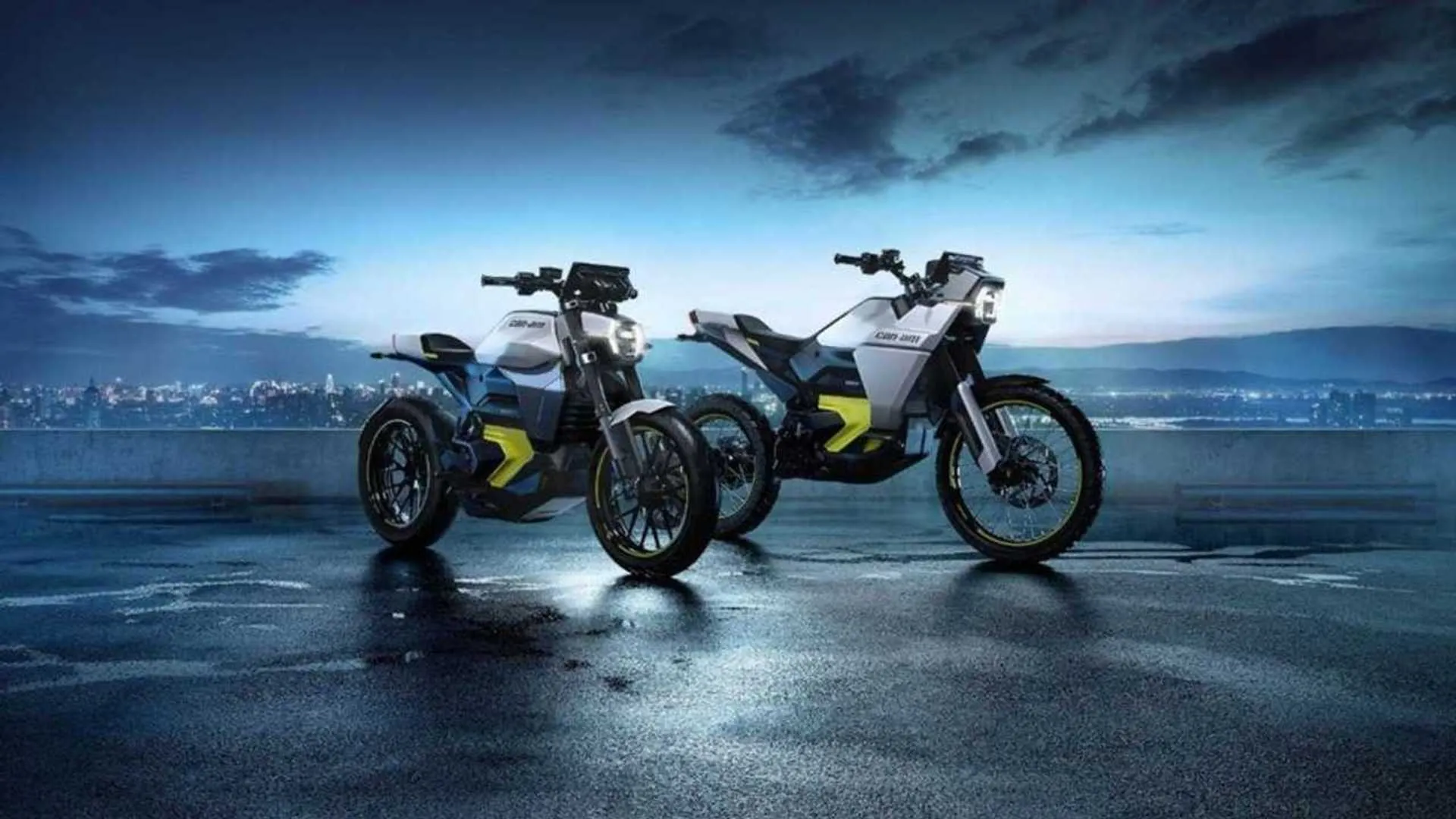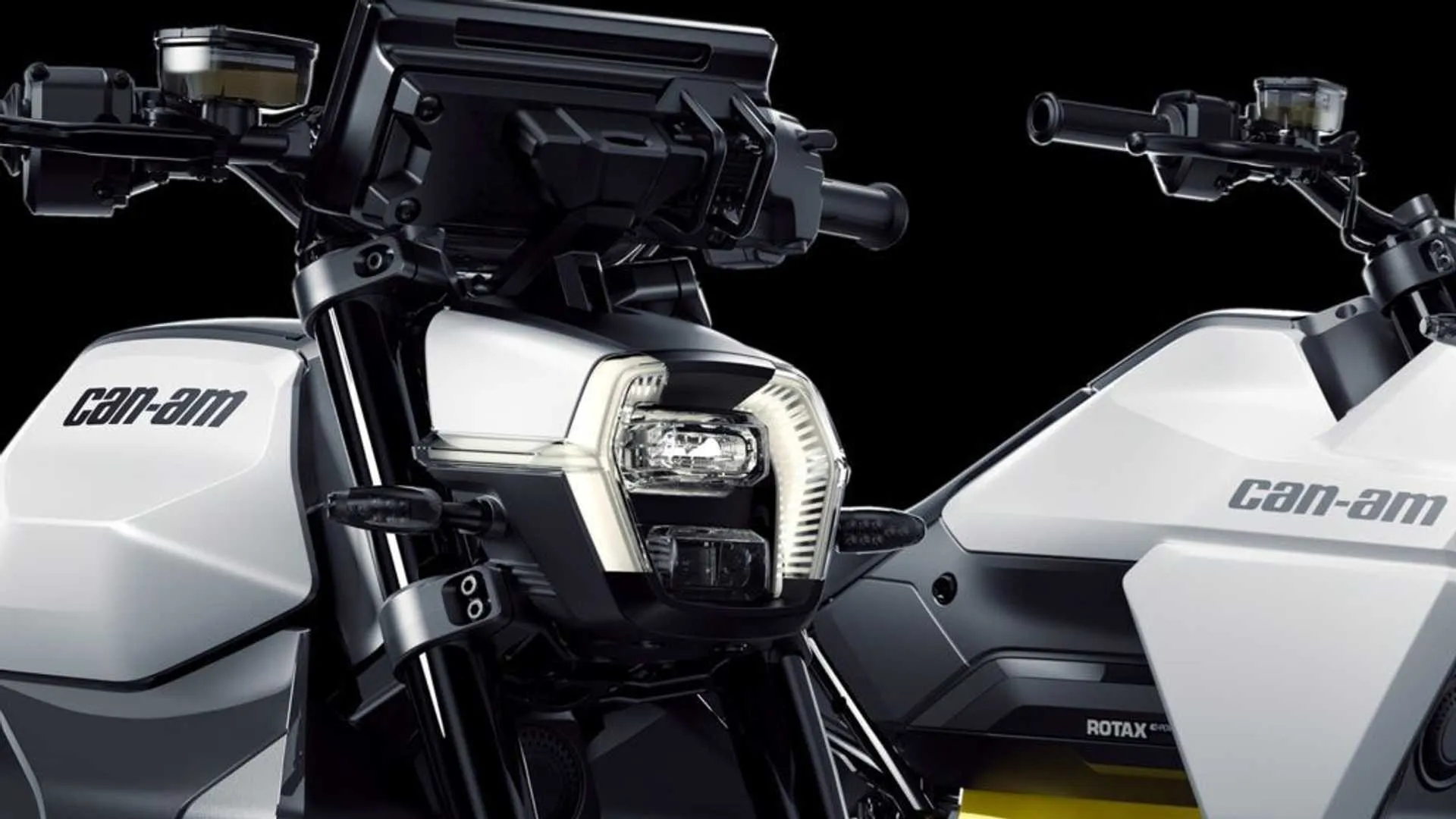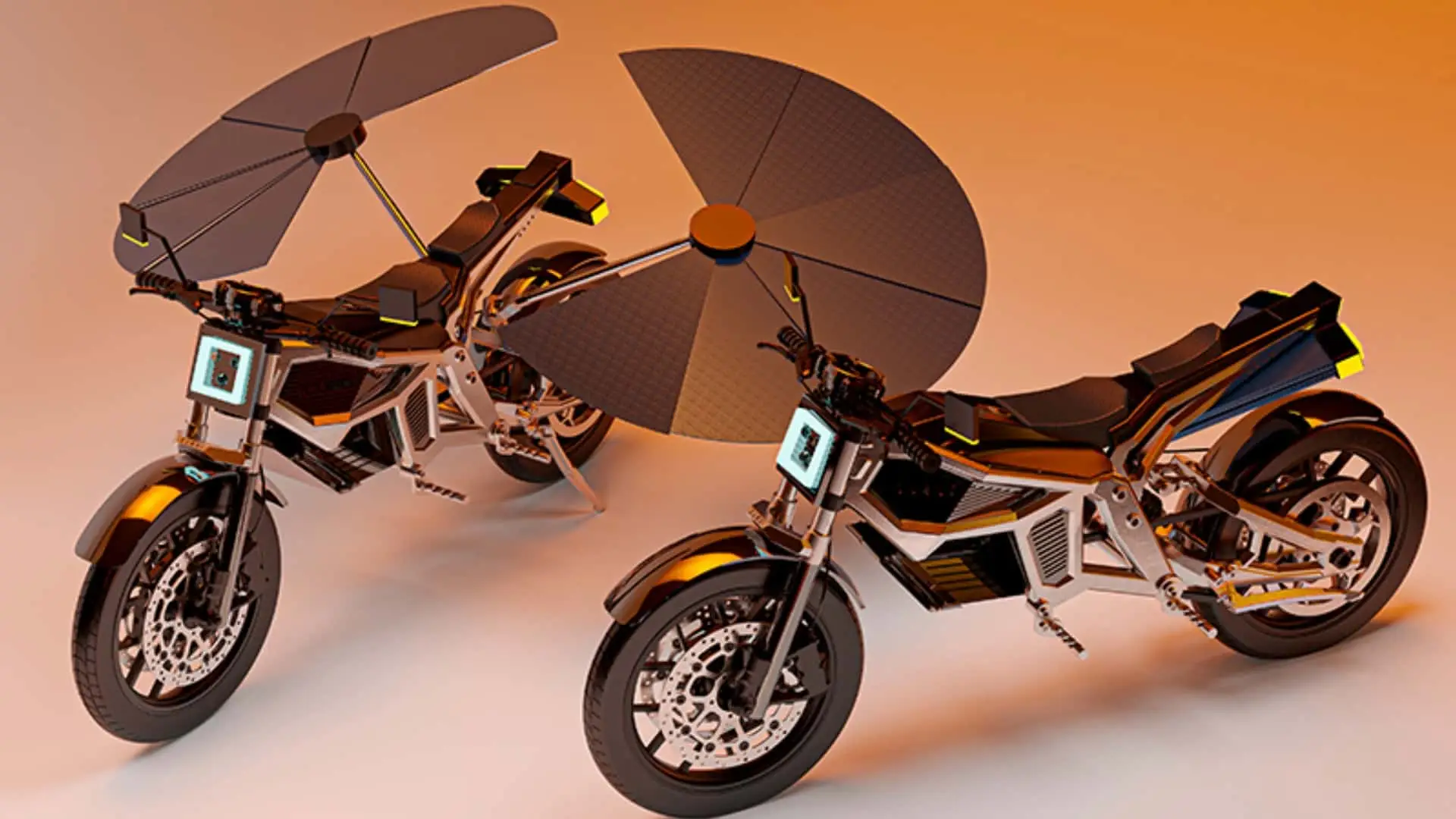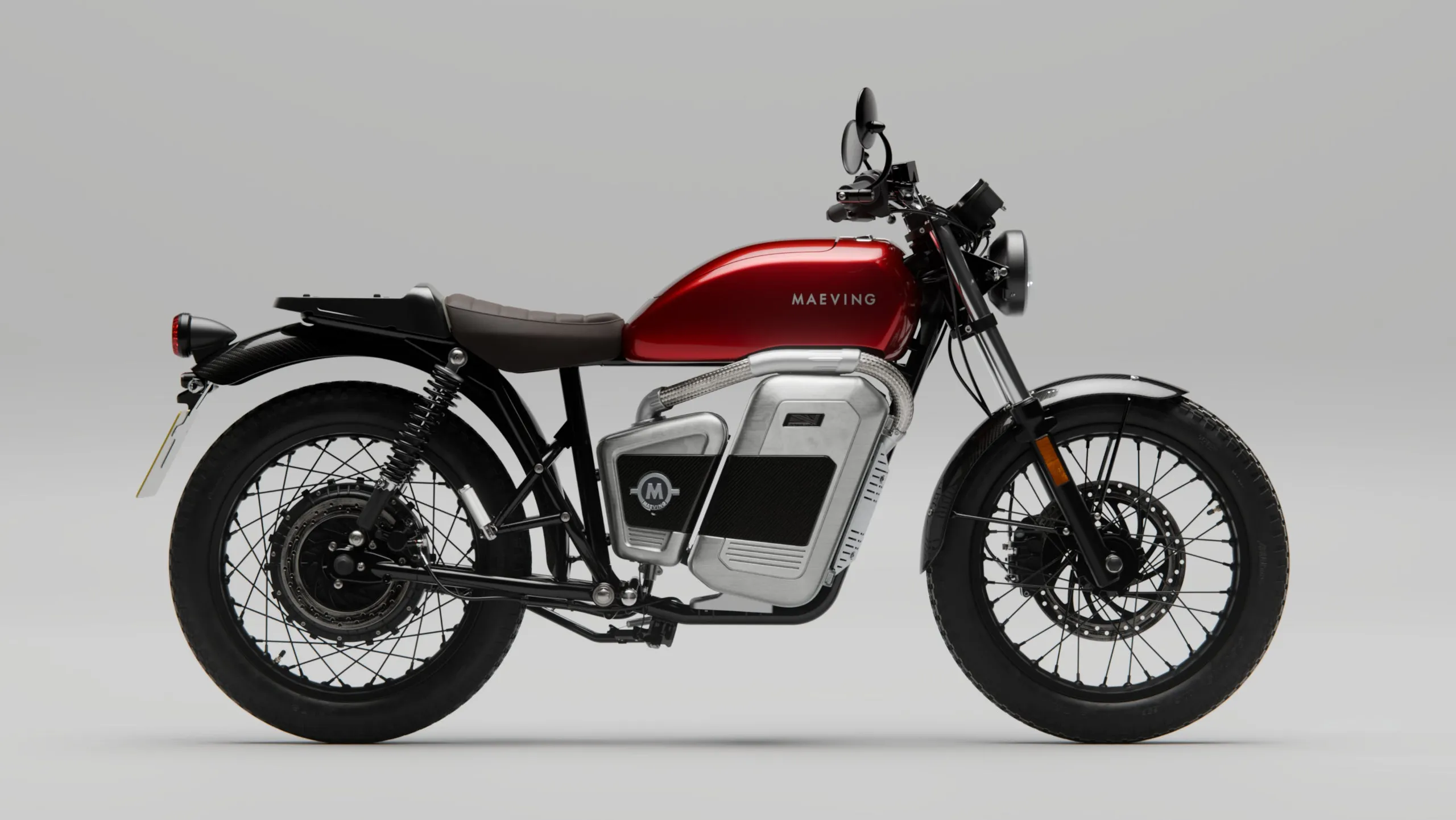Instant torque in the city, but short-lived stamina on the highway. The Can-Am Pulse is beautiful, technological, but it has a “but” that you need to know about.

Thinking about radically changing how you approach city traffic? The Can-Am Pulse arrives as a promise of a new era in urban electric motorcycles, combining advanced technology, striking visuals, and a riding mode that is completely different from what you might imagine. But is it the game-changer expected, or did it arrive too soon?
Can-Am Pulse: First Impressions of a (Nearly) Present Future
The Pulse is a naked electric motorcycle designed to be the ideal vehicle in congested cities. Its clean design, straight lines, and single-sided swingarm already draw attention in the garage—and on the street, it hardly goes unnoticed. Highlighting the ’73’ version, which pays tribute to the brand’s origins, blends past and future in a style that might appeal even to the most nostalgic.
If technology is your focus, the Pulse competes with any luxury car: a 10.25-inch touchscreen panel with Apple CarPlay, Bluetooth connectivity for media and calls, a dedicated compartment for your phone, and space for proprietary luggage. In today’s connected world, this package is essential, but few two-wheel rivals come close to this level.

Performance: Agile Like Few, Limited Like Many?
The essence of the Can-Am Pulse lies in its instant torque: 53 lb-ft right from the start, translating into nearly explosive acceleration at traffic lights and unparalleled ease for weaving through traffic. This happens because the electric motor requires no clutch, and the low gyroscopic effect facilitates maneuvers at any speed.
| Peak Power | 47 hp | Max Speed | 129 km/h (80 mph) |
|---|---|---|---|
| Urban Range | 161 km (100 miles) | Highway Range | 88.5 km (55 miles) at 80 km/h (50 mph) |
| Dry Weight | 177 kg (390 lbs) | Recharge Time (20-80%) | 50 min (Level 2 Charge) |
If on one hand, this is pure fun in the city—imagine never worrying about engine heat or gear changes in traffic—on the other, its limitation on highways is clear. The Pulse’s “stamina” runs out quickly at typical cruising speeds, and its real range on the road isn’t impressive if you plan to venture far from large urban centers.

Comfort and Advanced Connectivity (With Controversial Details)
In practice, riding the Pulse is enjoyable. The soft suspension absorbs bumps and cobblestones well, with a comfortable riding position—at least for the first few hours. For those planning long trips, the seat may leave something to be desired.
The onboard technology is a strong point but reveals some divisive aspects:
- The touchscreen panel is intuitive but only accepts wired Apple CarPlay.
- The phone compartment seems fragile, contrasting with the overall quality of the bike.
- Regenerative braking helps conserve energy and is easy to operate but turns off below 8 km/h (5 mph), always requiring the use of conventional brakes.
- The mirrors are a design spectacle… and, for some riders, literally “decorative.”
It’s not just the technical details that divide opinions about the Pulse. Due to its modern appearance and absolute silence, it can go unnoticed by other riders in traffic and is often mistaken for “delivery scooters.” However, when stopped at a traffic light, it becomes a curiosity even for those who never considered owning a motorcycle.

The Big “But”: Price VS Competition (And What That Means in Brazil!)
The launch price of the Can-Am Pulse—US$ 10,999—abruptly stalls its potential to revolutionize. For that amount, you could get a renewed Ducati Hypermotard V2, or the recently updated Kawasaki Ninja 500, with superior performance and half the price. Comparing technical specs versus investment makes the electric bike still a privilege—not a solution—for a few.
The challenge for the Brazilian and Latin American audience is even greater. The charging infrastructure in cities is just beginning to develop, turning life for apartment residents into a real test of patience (and creativity) to keep the Pulse charged. Not to mention the almost nonexistent fiscal incentives in our context.
The question is: is it worth paying more to “be part of the future” now, or wait for batteries and technology to drop in price, as has already happened with compact electric cars like the Renault 5 E-Tech?

Strengths and Weaknesses: Is It Worth Entering the Future Today?
The future is inevitable, and the Pulse shows that it will be electric, connected, sustainable, and fun in the city. The problem isn’t the motorcycle itself: it’s the timing. There are still practical details to improve, the range remains highly sensitive to changes in usage, and the lack of infrastructure weighs on Brazilian wallets. Not to mention the Chinese competitor—increasingly present in major capitals—which could “bother” traditional brands in the coming years. If you want to check out a rival promising to revolutionize prices, click to see the Maeving RM2.
In a few years, when solid-state batteries and ultra-fast charging become a reality—as demonstrated by this innovative Toyota project—the Can-Am Pulse could finally turn the concept of an agile urban electric motorcycle into a global standard. Until then, it is the future riding in the present… for those willing to pay for this early privilege.
If you are a pioneer, enthusiastic about new things, and value exclusivity, the Pulse might be your next motorcycle. However, if you seek cost-benefit, performance on trips, or 100% practical solutions, it might be better to wait for technology to drop from the pedestals—or visit the channel to explore other launches and comparisons, like the recently announced Ducati V21L with solid-state battery, expected to be the benchmark when the second generation of electric bikes arrives here.
In the end, the Can-Am Pulse is not just a motorcycle: it’s a window into what urban riding will be like in 5 years. Buying one today is collecting stories before they become obvious. The question is whether you’re brave enough to be the focus—and not just the audience—in this revolution.








